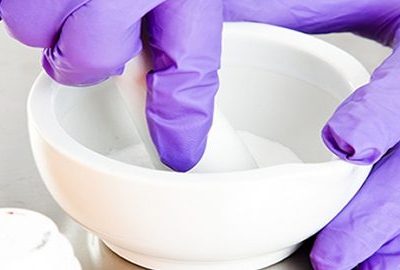Welcome to the drugs in pregnancy and lactation section for physicians and pharmacists. This section includes links to resources on teratology and drugs in pregnancy and safely prescribing in lactation/breastfeeding.
OBFocus
Drugs in Pregnancy and Breastfeeding
- Source: obfocus.com
- Clinical Resource: Reference
- Register to Access Content: No
Fact Sheets | Organization of Teratology Information Specialists
Our Fact Sheets answer frequently asked questions about many common exposures during pregnancy and breastfeeding, including medications, recreational substances, cosmetic treatments, health conditions, infections, vaccines, and more. Available in English and Spanish, our content summarizes available scientific information on whether women and their developing babies are at risk because of an exposure in their environment.
- Source: mothertobaby.org
- Clinical Resource: Factsheets
- Register to Access Content: No
Royal College of Obstetricians and Gynaecologists Guidelines on Pregnancy and Birth
- Source: rcog.org.uk
- Clinical Resource: Guidelines
- Register to Access Content: No
American College of Obstetricians and Gynecologists – Committee Opinions
Committee Opinions represent an ACOG committee’s assessment of emerging issues in obstetric and gynecologic practice and are reviewed regularly for accuracy.
- Source: acog.org
- Clinical Resource: Committee Opinions
- Register to Access Content: No
bumps – best use of medicines in pregnancy
bumps is provided by the UK Teratology Information Service (UKTIS). UKTIS is a not-for-profit organisation funded by Public Health England on behalf of the UK Health Departments. UKTIS (previously the National Teratology Information Service, NTIS) has been providing scientific information to health care providers since 1983 on the effects that use of medicines, recreational drugs and chemicals during pregnancy may have on the unborn baby.
- Source: medicinesinpregnancy.org.uk
- Clinical Resource: Leaflets
- Register to Access Content: No
Australian categorisation system for prescribing medicines in pregnancy
The Australian categorisation system and database for prescribing medicines in pregnancy have been developed by medical and scientific experts based on available evidence of risks associated with taking particular medicines while pregnant. This information is presented for the use of health professionals prescribing medicines to pregnant women
- Source: tga.gov.au
- Clinical Resource: Database
- Register to Access Content: No
U.S. National Library of Medicine
Developmental and Reproductive Toxicology Database (DART)
References to developmental and reproductive toxicology literature
- Source: nlm.nih.gov
- Clinical Resource: Database
- Register to Access Content: No
Prescription Drugs Taken During Pregnancy
by Dr. Ronald J. Ruggiero, Professor Emeritus in Pharmacy and Medicine at The University of California San Francisco Medical Center (UCSF).
- Source: visembryo.com
- Clinical Resource: Chart
- Register to Access Content: No
Global Library of Women’s Medicine Maternal-Fetal Medicine
Maternal–Fetal Medicine
- General considerations
- Medical complications
- Infectious diseases in pregnancy
- Surgical problems
- Fetal physiology
- Obstetric imaging, monitoring and special considerations
- Antenatal diagnosis
- Source: glowm.com
- Clinical Resource: Library
- Register to Access Content: No
The Cochrane Collaboration
Cochrane Reviews – Pregnancy & Childbirth
Cochrane is an international, non-profit, independent organisation, established to ensure that up-to-date, accurate information about the effects of healthcare interventions is readily available worldwide. It produces and disseminates systematic reviews of healthcare interventions, and promotes the search for evidence in the form of clinical trials and other studies of the effects of interventions.
- Source: cochrane.org
- Clinical Resource: Systematic Reviews
- Register to Access Content: No
“Drug Effects during Pregnancy & Lactation”
The objectives of this lesson are such that upon completion the participant will be able to:
- List the routes through which drugs and nutrients cross the placenta.
- Discuss the rate at which drugs penetrate the placental barriers.
- Differentiate between the five categories of drugs as established by FDA based on the potential benefits & risks during pregnancy.
- List the factors that affect drug transport into human milk.
- Describe the risk from drugs taken while breastfeeding
- Source: wfprofessional.com
- Clinical Resource: CE / CPD / Learning
- Register to Access Content: No
Teratology and Drug Use During Pregnancy
The purpose of this article is to provide an organized source of information about medication use in pregnancy, with data regarding commonly used medications and pregnancy categories established by the US Food and Drug Administration (FDA).
- Source: medscape.com
- Clinical Resource: Article
- Register to Access Content: No
Pharmacokinetic Variability in Pregnancy
This article will review pharmacokinetic changes in pregnancy.
- Source: ufl.edu
- Clinical Resource: Publication
- Register to Access Content: No
Drugs in Pregnancy: Do the Benefits Outweigh the Risks?
Drug use during pregnancy continues to remain a major concern due to the unknown effects on mother and fetus. Physicians are faced with difficult situations as they have very little information to help them decide whether the potential benefits to the mother outweigh the risks to the unborn fetus.
- Source: uspharmacist.com
- Clinical Resource: Journal Article
- Register to Access Content: No
InfantRisk Center
Dr. Hale is considered the foremost leading expert in the field of perinatal pharmacology and the use of medications.
“The vision of the InfantRisk Center is to create a new body of drug information concerning the hazards and safety of medications and their use during pregnancy and during lactation,” said Tom Hale, Ph.D. “Ultimately, we wish to funnel this information into an effort to extend and enhance our knowledge of the use of medications and other environmental chemicals in pregnant and breastfeeding women”.
The InfantRisk Center will be dedicated to providing up-to-date evidence-based information on the use of medications during pregnancy and breastfeeding. Our goal is to provide accurate information regarding the risks of exposure to mothers and their babies. By educating healthcare professionals and the general public alike, we aim to reduce the number of birth defects as well as create healthy breastfeeding relationships.
- Source: infantrisk.com
- Clinical Resource: Various
- Register to Access Content: No
U.S. National Library of Medicine
Drugs and Lactation Database (LactMed)
A peer-reviewed and fully referenced database of drugs to which breastfeeding mothers may be exposed. Among the data included are maternal and infant levels of drugs, possible effects on breastfed infants and on lactation, and alternate drugs to consider.
- Source: nlm.nih.gov
- Clinical Resource: Database
- Register to Access Content: No
Drugs in Breastmilk Factsheets
- Source: breastfeedingnetwork.org.uk
- Clinical Resource: Factsheets
- Register to Access Content: No
Drug Safety in Lactation Q&As
- Source: sps.nhs.uk
- Clinical Resource: Questions and Answers
- Register to Access Content: No
Medicine Use in Lactation
Medicines are often needed by women who are breastfeeding. However, there is often a lack of, or ambiguous, information about the safety of medicines transferred to the infant in breast milk. This has meant that in the past breastfeeding has been stopped unnecessarily or a different, potentially less appropriate treatment prescribed.
- Source: medsafe.govt.nz
- Clinical Resource: Article
- Register to Access Content: No
Resources last checked: 11/08/2021



